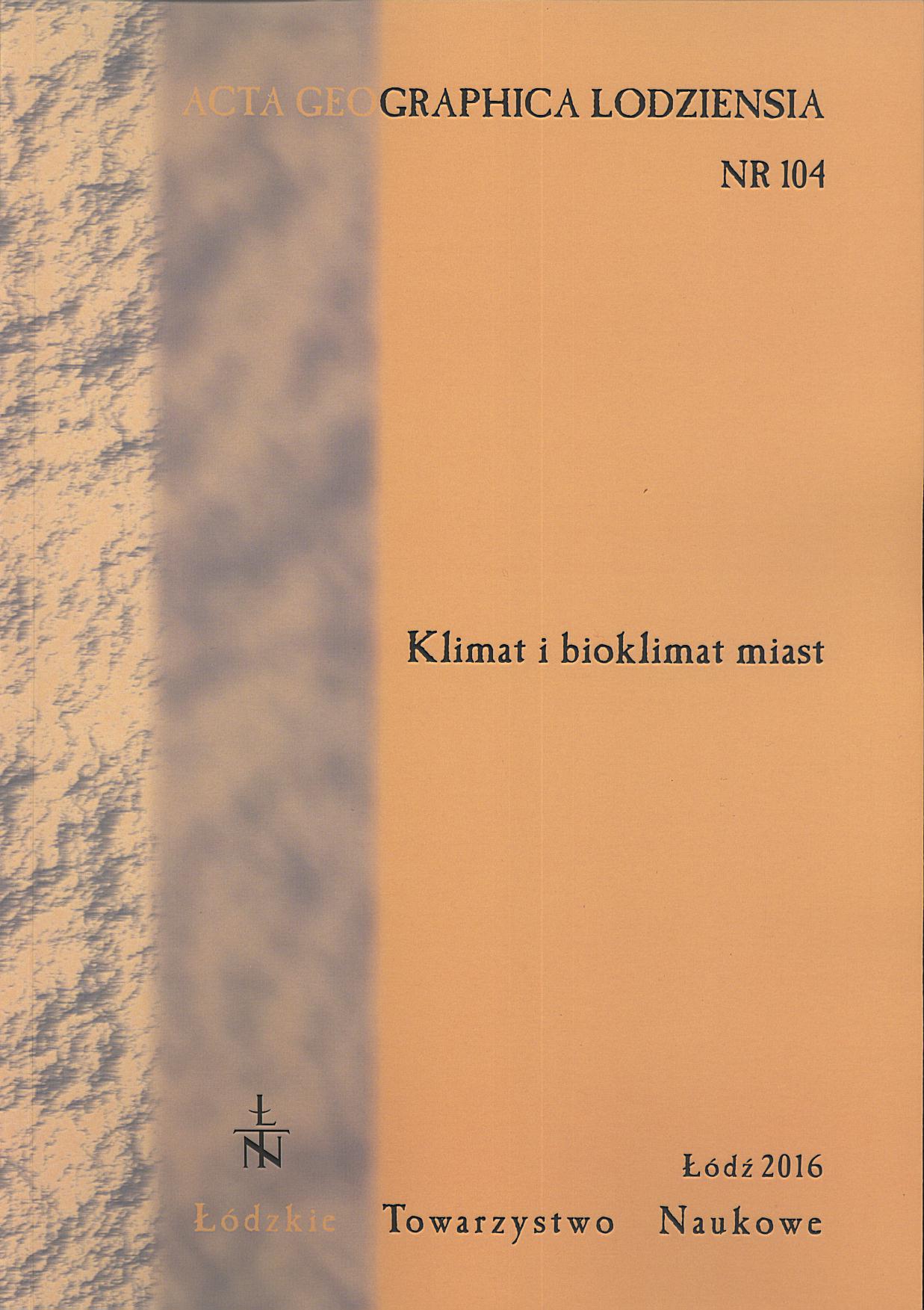Zróżnicowanie wysokich dobowych sum opadów w Łodzi i okolicach na tle cyrkulacji atmosferycznej
The variability of high daily precipitation totals in Łódź and its surroundings in relation to atmospheric circulation
Author(s): Joanna Jędruszkiewicz, Mariusz ZielińskiSubject(s): Geography, Regional studies, Environmental Geography
Published by: Łódzkie Towarzystwo Naukowe
Keywords: urban climate; high daily precipitation totals; atmospheric circulation; Łódź
Summary/Abstract: Urban areas can modify precipitation not only through an increased amount of rainfall but also itsenhancement. This is a result of climatic conditions being different from natural e.g. existence of urbanheat island, large amount of aerosol, increased surface roughness etc. The main aim of this studywas to investigate the variability of high daily precipitation totals between the urbanized area of Łódźand the surrounding rural areas. Data collected at three stations located in the city (Politechniki), onthe outskirts (Łódź-Lublinek) and outside the city (Ciosny) was analyzed. As a result of low availabilityof rainfall data from the city station, the period under consideration in this study was limited toyears 2010–2013. High precipitation events were characterized by several indices defined by the ExpertTeam on Climate Change Detection and Indices (ETCCDI) i.e. annual number of days with dailyprecipitation ≥ 10mm and ≥ 20mm (R10 and R20), simple daily intensity index (SDII). For the analysis of the influence of atmospheric circulation on the observed precipitation in Łódź, the applied circulationpatterns were established according to Piotrowski (2009) and the HYSPLIT model.The annual precipitation totals in the considered period were on average higher (598 mm) thanlong term means, 1981–2010 (570.1 mm) or 1931–1995 (560.2 mm). The highest rainfall exceeding750 mm was observed in 2010, while in 2011 and 2012 the precipitation did not exceed 500 mm. Thelargest differences in monthly precipitation totals between the considered stations were found in late spring and summer. For the rest of the year, monthly rainfall in urban and suburban was almost of thesame magnitude. In the period 2011–2012 on average there was 10 days with precipitation ≥10 mm,but in 2010 and 2013 the number of such days was almost double (from 16 days at Łódź-Lublinek to24 at Ciosny). In dry years (2011–2012) the precipitation ≥20 mm occurred on 1-3 days, while in wetyears (2010 and 2013) on 4-6 days. The highest daily rainfall occurred from May to August. For instance,in May of 2010 and June of 2013, at Ciosny, the maximal daily precipitation totals were 61.5and 50 mm respectively. At the same time the precipitation at the suburban and urban stations did notexceed 40 mm.Most of the high precipitation events (70%) in Łódź and its surroundings were connected to thecyclonic circulation. Large discrepancies in the prevailing wind direction associated with high precipitationevents were found between analyzed stations. At the suburban site, most of the precipitationtotals ≥10 mm were observed during the inflow from N, W and SW. At the urban and suburban sitesmost of such days were found for the inflow from E and NE respectively. For the anticyclonic circulation,the largest number of high precipitation events was found for the SW direction at all consideredstations. The 3-day backward trajectories obtained from the HYSPLIT model indicated that high precipitationin Łódź and its surrounding is associated with air masses that travel across Western andSouth-western Europe.The analyses performed for a relatively short period (only 4-years) did not enable to determinesignificant influence of the urban area of Łódź on the precipitation. For instance, the fact that higherprecipitation totals are observed at rural site than in the city may be associated with the topographical effects rather than the influence of e.g. urban heat island.
Journal: Acta Geographica Lodziensia
- Issue Year: 2016
- Issue No: 104
- Page Range: 201-211
- Page Count: 11
- Language: Polish

